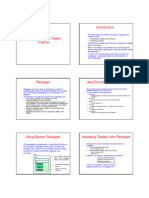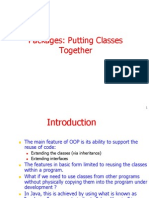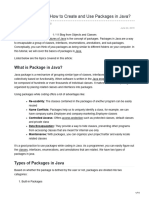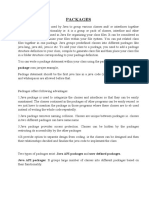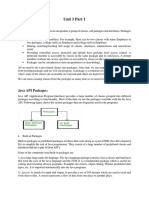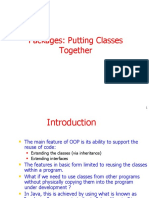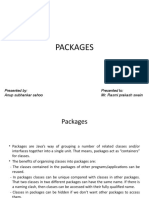0% found this document useful (0 votes)
35 views27 pagesJava Packages
The document provides a comprehensive overview of Java packages, including their definition, types, and advantages. It covers standard Java packages such as java.lang, java.util, and java.io, as well as user-defined packages, their creation, usage, and best practices. Additionally, it discusses advanced concepts like package scope, nested packages, annotations, and practical applications in organizing large projects and managing dependencies.
Uploaded by
Nishant JangidCopyright
© © All Rights Reserved
We take content rights seriously. If you suspect this is your content, claim it here.
Available Formats
Download as PPTX, PDF, TXT or read online on Scribd
0% found this document useful (0 votes)
35 views27 pagesJava Packages
The document provides a comprehensive overview of Java packages, including their definition, types, and advantages. It covers standard Java packages such as java.lang, java.util, and java.io, as well as user-defined packages, their creation, usage, and best practices. Additionally, it discusses advanced concepts like package scope, nested packages, annotations, and practical applications in organizing large projects and managing dependencies.
Uploaded by
Nishant JangidCopyright
© © All Rights Reserved
We take content rights seriously. If you suspect this is your content, claim it here.
Available Formats
Download as PPTX, PDF, TXT or read online on Scribd
/ 27



